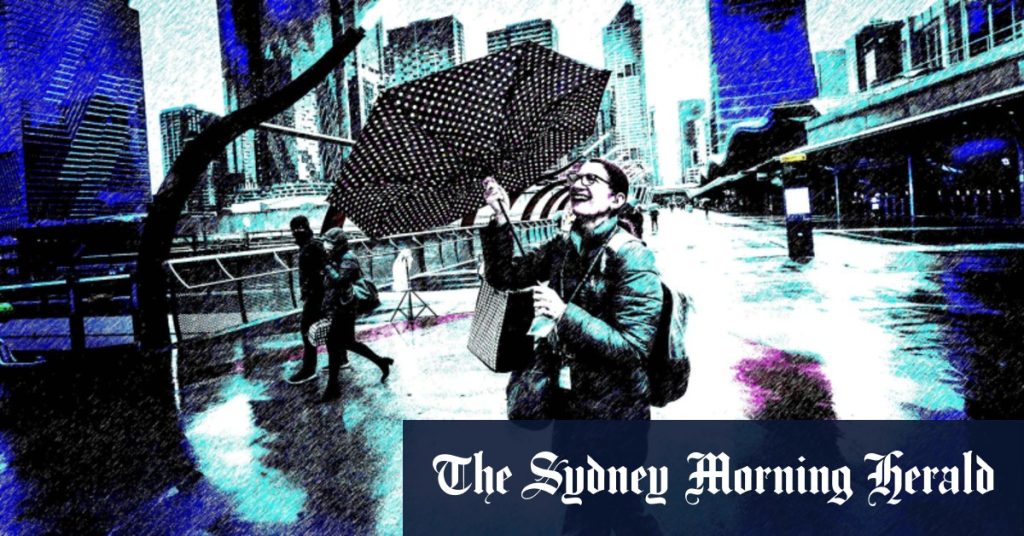Summarize this content to 2000 words in 6 paragraphs The Age’s Docklands series explores what has gone wrong with Melbourne’s most maligned suburb and what could be done to fix it.There are several reasons why Docklands is so windy. One element is the short-term commercial thinking, which plagued the development of the suburb years ago.Dr Seifu Bekele, a wind engineer, says wind effects were not considered when Docklands was built.Credit: Simon SchluterDoctor Seifu Bekele, the director of Global Wind Technology Services, says this meant not enough consideration was given to the implications of wind in the area. This resulted in the construction of apartments and giant buildings towering over open space, causing a wind-tunnel effect as pedestrians passed through.“You feel the wind immediately in the Docklands, but not inside the city, because the wind is interrupted and sheltered by all the other buildings around,” says Bekele, who has more than two decades of experience in wind engineering.Holmes agrees. He says the trouble with Docklands is there was never a clear plan for the area on how to manage and mitigate wind. To his knowledge, no in-depth wind testing has ever been conducted in the suburb to guide future planning.“They should have set out guidelines for the area and mapped out where the tall buildings should go 30 years ago,” he says. “Unless we knock down all the buildings and start again, it’s a bit too late now.”Pedestrians often feel the brunt of strong winds in Docklands.Credit: Penny StephensIt is a mistake he does not want to see repeated in future developments in Docklands or nearby Fishermans Bend.“In other words, plan the tall building layout for future developments, so you don’t have these sorts of problems,” he says.Despite the Bureau of Meteorology headquarters being based in Docklands, Holmes said there is no anemometer, a device that measures wind speed and direction, in the suburb.“People often ask ‘how strong the wind is in the Docklands’, and the truth is we really don’t know the answer. There’s been no device there to ever measure it,” he says.The other culprit is geography. Bekele says the suburb’s proximity to water means whatever development occurred there, it was always going to be pummelled by strong winds.“It’s a waterfront, it’s going to be windy,” he says.So, could the wind-channel effect ever be fixed in Docklands? Bekele holds out hope it could. The first step would be conducting studies using sensors to analyse where the wind channelling is coming from.“Then once you do that, you can start introducing more trees or planation along the streets identified in the tests to shelter them from the wind,” he says.Globally, he said wind-screening devices, such as cyclone-resistant facades, have been used successfully in places like Hong Kong, to withstand heavy rainfall and storm-force winds.In Hong Kong, for example, buildings are often constructed with typhoon-resistant materials and stringent building codes are enforced for every development to ensure wind and other weather patterns are front-of-mind.He says similar building codes and guidelines should be developed for Docklands.City of Melbourne planning permits in the Docklands precinct must now be assessed against design and development overlays, which requires a wind assessment impact report by a qualified wind engineer.RMIT planning researcher Hugh Stanford is also optimistic Docklands can shake its reputation as a sterile precinct of concrete and wind tunnels.Sandford, whose research examines conservation science in urban areas, says Docklands posed an ideal opportunity to bring more nature into the city, something he adds could ease winds, and also have physical and mental health benefits.“You can’t prevent wind coming into the city, but you can put things in the way to break up the wind as much as possible,” he says. “At the same time you can soften those hard landscapes and the uninviting sterile environments that we might associate with Docklands.”Stanford says this could involve strategically planting trees and diverse vegetation, as well as encouraging planners and landscape architects to think creatively about future developments.“Anyone looking around Docklands would say there are some trees and then there’s cement, and then is this large, open space between a canopy and the ground,” he says.“What we really need is structural diversity from the pavement to the trees, what we call mid-story vegetation. This helps break up wind and reduce the heat on a really hot day as well.”A City of Melbourne spokeswoman said the council had planted than 3500 trees in Docklands in the past decade, despite limitations due to underground infrastructure and the fact that much of the public space was owned by other levels of government.“Within our planning authority, we assess wind impacts of all new developments on a case-by-case basis to ensure the best outcomes for our community,” she said.She said the council had also increased greening and infrastructure projects through its urban forest fund grants. This includes the Victoria Point Podium Greening project outside Marvel Stadium. Once complete, it will include 2850 square metres of green cover and new trees planted for shading and wind breaks.Comment was sought from the Department of Planning.The Morning Edition newsletter is our guide to the day’s most important and interesting stories, analysis and insights. Sign up here.















